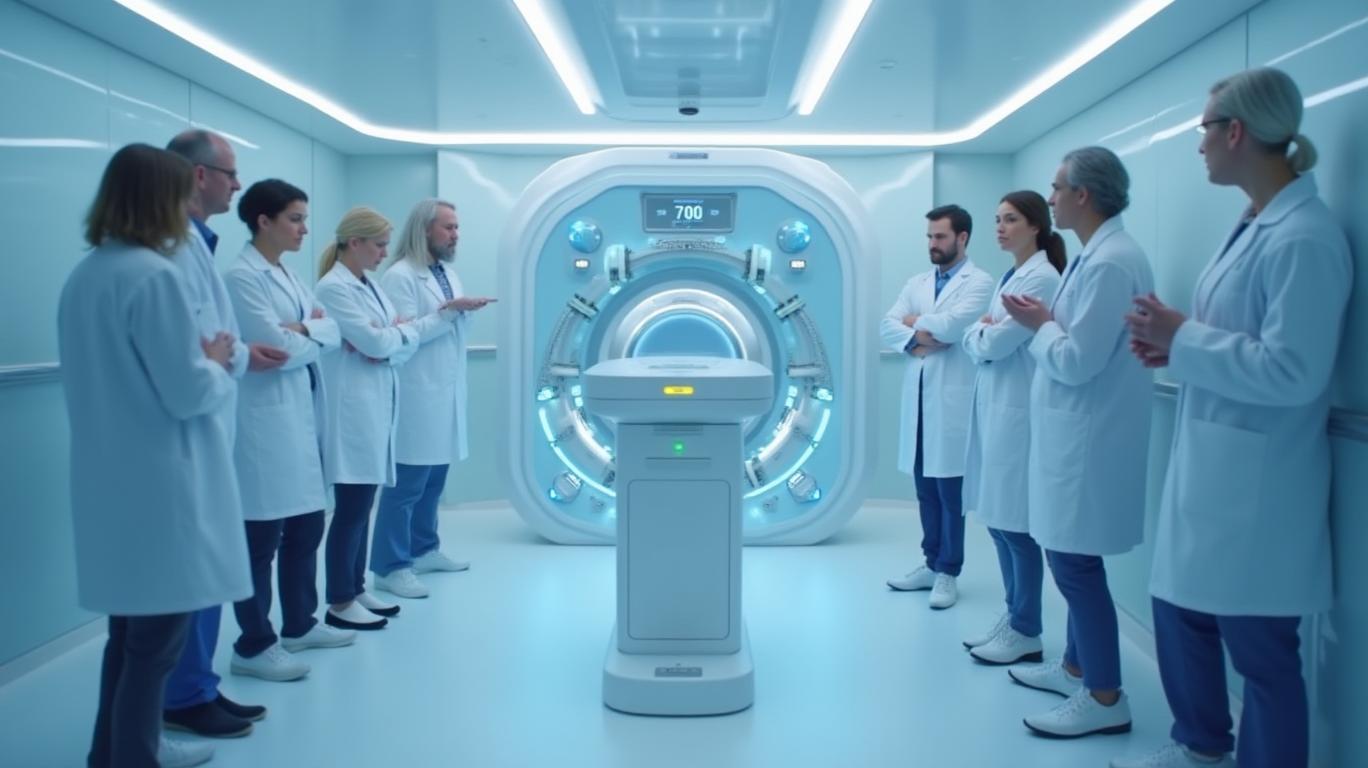Nano-X Imaging’s FDA-Cleared Nanox.ARC X: A Game-Changer in Medical Imaging Accessibility?
The U.S. Food and Drug Administration (FDA) granted 510(k) clearance for Nano-X Imaging’s (NASDAQ: NNOX) Nanox.ARC X imaging system on April 17, 2025, marking a pivotal milestone for the Israeli medtech firm. This approval, secured in under 30 days—a rapid turnaround for regulatory reviews—positions the Nanox.ARC X as a disruptive force in the $64 billion global medical imaging market. The system’s blend of advanced 3D imaging capabilities, compact design, and cost efficiency could redefine diagnostic accessibility, particularly in underserved regions. But is this breakthrough enough to turn Nano-X’s vision into sustained profitability?

Technical Breakthrough: Cold Cathode Innovation Meets Plug-and-Play Accessibility
The Nanox.ARC X builds on the original Nanox.ARC system, which received FDA clearance in December 2024. The newer model employs proprietary cold cathode technology to generate high-resolution tomographic images, reducing reliance on costly CT scans. Unlike traditional X-ray systems, it creates layered 3D views, minimizing anatomical overlap—a critical advantage for diagnosing fractures, lung nodules, and abdominal conditions.
The system’s design innovations are equally compelling:
- Single-unit, compact footprint: Ideal for small clinics, rural hospitals, and mobile healthcare units.
- Plug-and-play installation: Setup requires just one day and minimal infrastructure adjustments, operating on standard 110V/230V power.
- Cable-free operation: Enhances safety and simplifies maintenance.
These features address key pain points in the market, where legacy imaging systems often demand large footprints, specialized power, and weeks of installation. The FDA clearance now expands its use to general clinical applications, including musculoskeletal, pulmonary, and intra-abdominal imaging.
Market Opportunity: Democratizing 3D Imaging
The global 3D X-ray market is projected to grow at a 5.8% CAGR, driven by demand for non-invasive diagnostics and early disease detection. Nano-X’s strategy targets two critical gaps:
1. Cost and complexity barriers: Traditional CT and MRI systems can cost upwards of $1 million and require dedicated facilities. The Nanox.ARC X, priced at $60,000–$80,000, aims to undercut competitors like GE Healthcare and Siemens Healthineers.
2. Geographic reach: With CE Mark certification secured in February 2025 and partnerships in Europe (e.g., distributors in Romania and Greece), the company is primed to capture markets where high-end imaging is scarce.
Clinical trials underscore its value:
- A 19-patient study at Shamir Medical Center demonstrated superior fracture localization compared to standard X-rays.
- Phantom studies showed the system detected lung nodules in simulated obesity scenarios where conventional X-rays failed.
Financial Considerations: Growth vs. Persistent Losses
While the Nanox.ARC X’s regulatory success is a win, Nano-X’s financials remain challenging. Q4 2024 revenue reached $3.0 million, a 25% increase year-over-year, driven by its teleradiology segment (USARAD). However, the company reported a GAAP net loss of $14.1 million—up from $10.2 million in 2023—due to high R&D and operational costs.
The stock dipped 3.3% on May 13, 2025, after Q1 2025 results revealed a $3.0 million revenue shortfall against estimates, despite the FDA clearance. Analysts note the company’s $25.43 price-to-sales ratio reflects optimism about long-term potential, but investors remain cautious about near-term profitability.
Risks and Challenges
- Market adoption hurdles: While the system’s design is compelling, healthcare providers may resist switching from established brands like Philips or Siemens.
- Competitor countermeasures: Major players could lower prices or introduce competing compact imaging systems.
- AI ecosystem dependency: Nano-X’s broader vision includes AI-driven diagnostics (e.g., Nanox.CLOUD) and telemedicine (Nanox.MARKETPLACE). These initiatives require significant investment and partnerships to succeed.
Conclusion: A High-Reward, High-Risk Bet
Nano-X’s FDA clearance for the Nanox.ARC X is a strategic win, addressing critical gaps in accessibility and cost. With a 25% increase in AI customer projects and partnerships in Europe, the company is well-positioned to capitalize on its ecosystem. However, its $614 million market cap and -1,712.7% pre-tax margin (2024) underscore the financial risks.
For investors, the calculus hinges on whether the $3.0 million Q1 2025 revenue signals a turning point or a stumble. The Nanox.ARC X’s scalability—paired with its remote software update capability—could drive exponential growth. Yet, without margin improvements, Nano-X may need further equity raises, risking dilution.
The FDA clearance is a critical step, but sustained profitability will depend on Nano-X’s ability to scale installations, reduce losses, and solidify its AI-driven ecosystem. For now, it’s a high-risk, high-reward play for investors willing to bet on a future where 3D imaging is as accessible as a standard X-ray.










